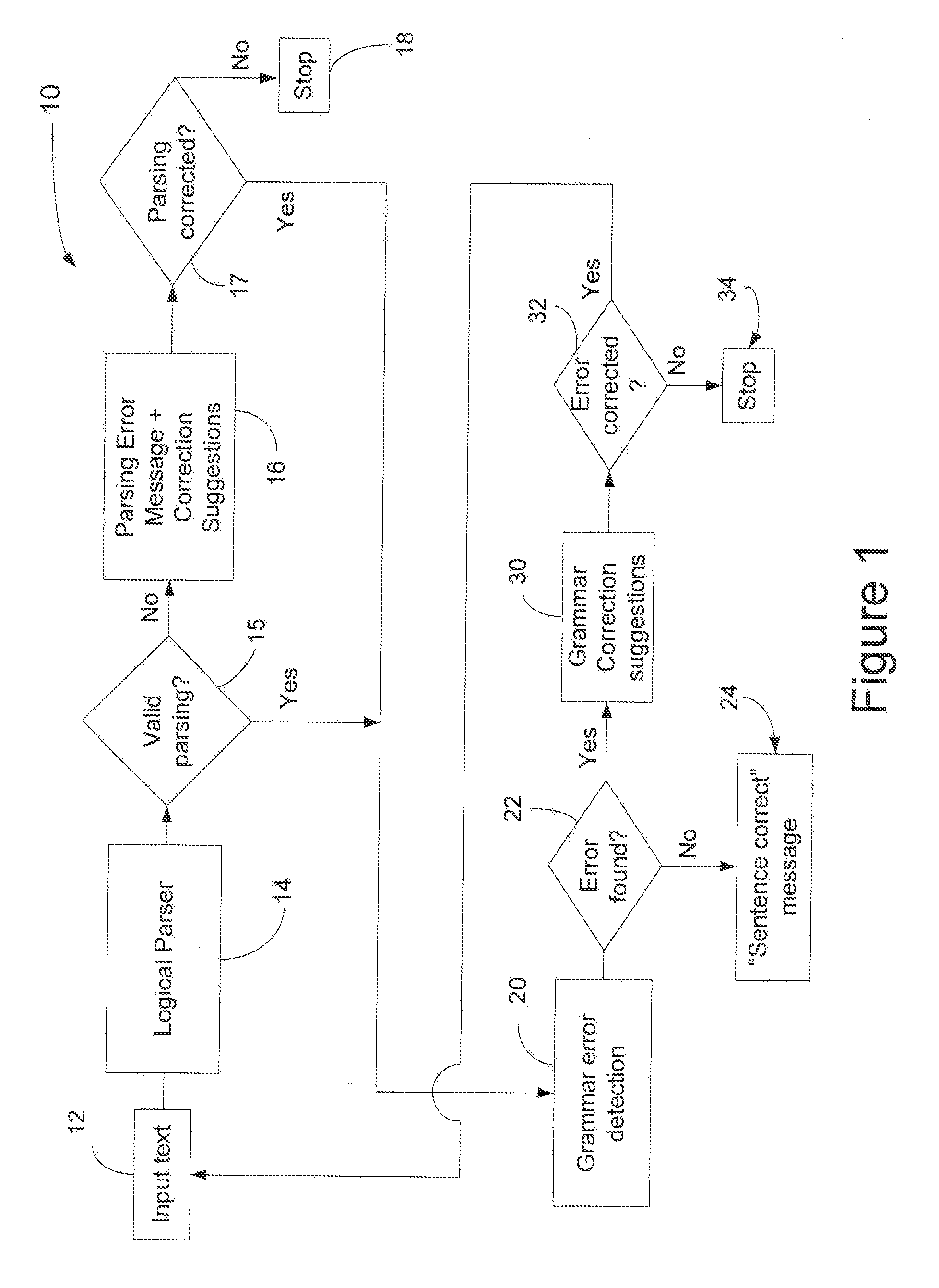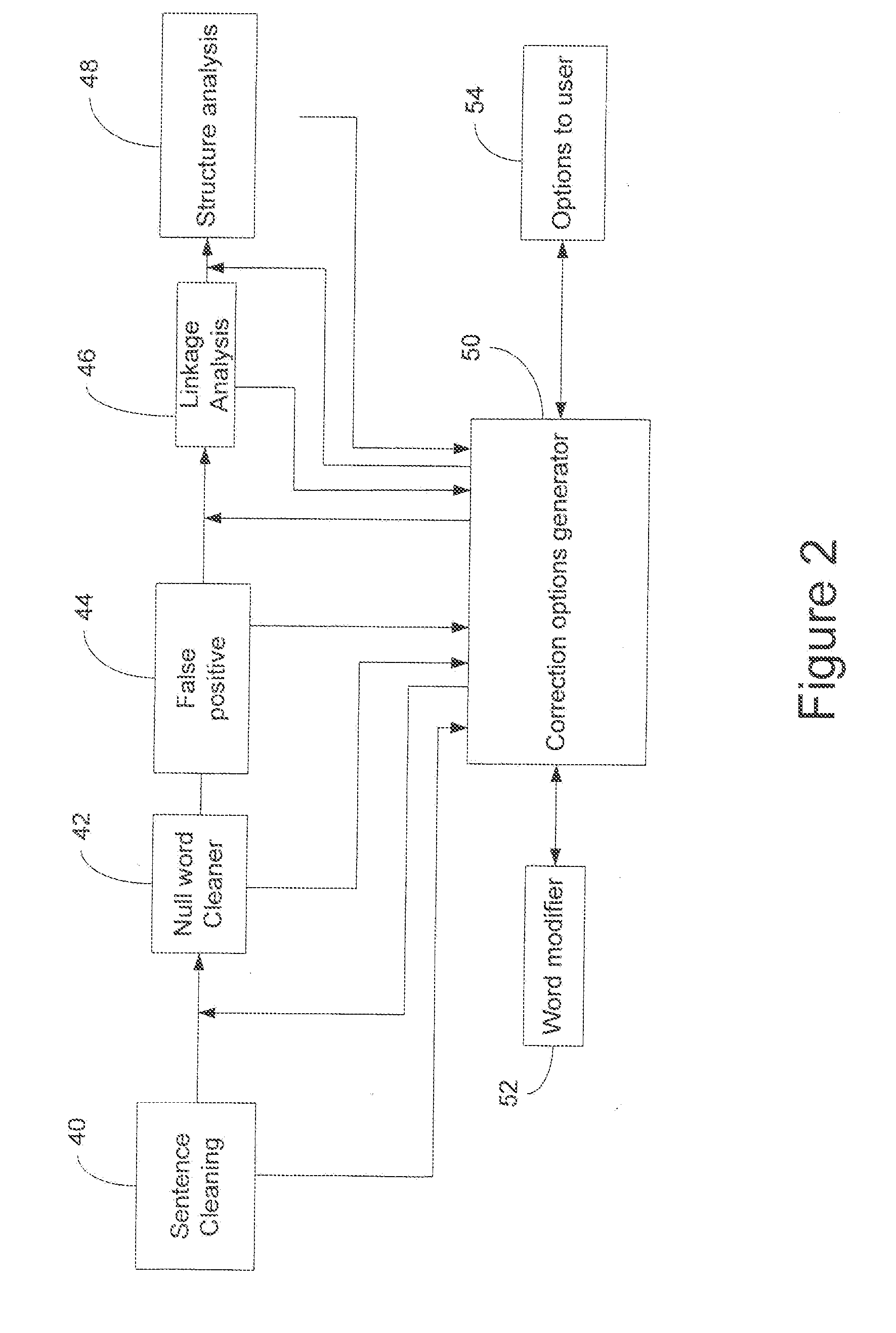Grammer checker
a grammar checker and grammar technology, applied in the field of automatic grammar checker, can solve the problems of poor statistical approach, and inability to complete grammar correction, and achieve the effect of improving the way grammar-checking software looks at sentences and increasing the quality and number of error corrections
- Summary
- Abstract
- Description
- Claims
- Application Information
AI Technical Summary
Benefits of technology
Problems solved by technology
Method used
Image
Examples
Embodiment Construction
[0046]The present invention relates to a method and system for computerized grammar checking (sentence parsing, error detection and correction of text). Substantially all the elements required to know which decision to make according to the elements in the sentence, or in a specific phrase environment, are provided to the grammar checker.
[0047]Each part of the program is intimately related to and dependent on language management definitions and rules, which set forth the logically correct structural relationships between words in a sentence according to the rules. These language management rules are a set of rules by which text in the selected language can be parsed and corrected, according to a preferred embodiment of the present invention. The organization of language into phrases, and the rules followed by these phrases, are set forth in Appendix I. Each rule or definition can be considered as a pattern leading to the identification of either a correct phrase (a correct set combi...
PUM
 Login to View More
Login to View More Abstract
Description
Claims
Application Information
 Login to View More
Login to View More - R&D
- Intellectual Property
- Life Sciences
- Materials
- Tech Scout
- Unparalleled Data Quality
- Higher Quality Content
- 60% Fewer Hallucinations
Browse by: Latest US Patents, China's latest patents, Technical Efficacy Thesaurus, Application Domain, Technology Topic, Popular Technical Reports.
© 2025 PatSnap. All rights reserved.Legal|Privacy policy|Modern Slavery Act Transparency Statement|Sitemap|About US| Contact US: help@patsnap.com



